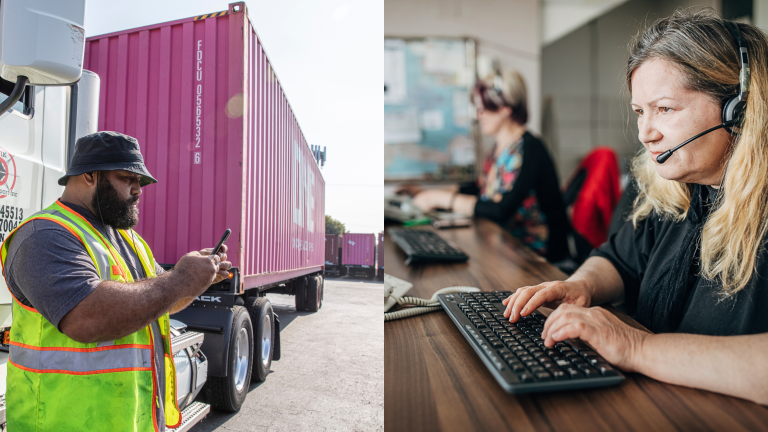Earlier this year (2021) research by Consumer Reports found that many electric and hybrid vehicles have stopping distances of between 6 and 12 feet compared to their non-electrified equivalents. This, testers concluded, could be the difference between “a near collision and a potentially fatal crash”.
Consumer Reports’ findings argued that one of the major factors behind the reduced stopping distances in hybrid and electric vehicles was their use of low-rolling resistance tires. These are tires that improve fuel economy and EV range by reducing the amount of friction created between the tire and the road. This friction is also what causes a vehicle to slow down when you brake.
These findings present a potential problem for fleet operators and drivers, given the fact that current approaches in the industry focus heavily on improving fuel economy at all cost. As a result, it is the norm for fleet vehicles to use low rolling resistance tires. This can result in safety issues, particularly as fleets becoming increasingly electrified.
The following article will explain what features of tires that fleet managers should prioritize in order to achieve a healthy balance between fuel economy and safety for their drivers and other road users.
Assessing and Evaluating Tires
Tires are labeled across three criteria, these are: fuel efficiency, wet grip, and durability. For each of these criteria, tires are given a score out of 100.
Low rolling resistance tires, as typically found on fleet vehicles, generally score well for fuel efficiency, but fare relatively poorly for durability and especially poorly for wet grip. This is because one of the most effective ways to reduce rolling resistance is by reducing the amount of grip that a tire has with the road. This can either be achieved by reducing the tread depth of the tire or by reducing the width of the tire tread.
As fleet vehicles get more powerful, in part through electrification, fleet operators should place higher priority on the wet grip rating of tires. Anything under 40 out of 100 should be considered unacceptable for vehicles that will be primarily driven at high speeds (long haul freight vehicles would fall into this category).
As tire technology gets more sophisticated, there will be a greater selection of tires available that score highly on all three metrics. This technology should only accelerate in its development as vehicles electrify and get more powerful. However, for now fleet managers need to have some caution in choosing tires purely based on their fuel efficiency.
Choosing the Right Tire for the Right Terrains
Another potential trap that fleet operators can fall into is opting for the most fuel efficient tires without realising that these types of tires are often unsuitable for imperfect terrains.
Low rolling resistance tires (the types of tires that generally offer the greatest fuel efficiency) are often thinner and have lower tread depth than standard tires. Therefore they are prone to losing traction and potentially even blowing out when being driven on gravel or dirt roads. Fleet managers should therefore avoid adopting these types of tires if their vehicles may travel on unpaved roads for any part of their route.
Vehicles that travel on a combination of different terrains are the most difficult to fit out with tires that offer both safety, durability and fuel efficiency. In these types of circumstances it’s best to just opt for all-terrain, all-season tires so all your bases are covered.
Balancing Safety and Budget Constraints
Fleet operators should accept that when it comes to tires, you get what you pay for.
More cost effective low rolling resistance tires improve fuel economy purely through reducing either tread width or tread depth. Therefore they will invariably offer poorer grip of the road.
As tire technology has become more sophisticated, manufacturers have started incorporating silica compounds in low rolling resistance tires that allow tires to reduce friction while at the same time maintaining a high-level of traction.
These silica compounds are, however, still expensive to manufacture and incorporate into tires, and this cost will be passed onto the consumer. Fleet operators should therefore look to take an “all or nothing” approach to adopting low rolling resistance tires. Either they should be willing to invest in state of the art tires, or stick to standard tires that have both modest fuel efficiency and a decent level of grip and durability.
Opting for cheaper low rolling resistance tires due to budget constraints can put your drivers, and other road users, at risk of accidents caused by reduced stopping distances.
Route Tracking and Communication with Drivers is Key
For fleet operators to equip their vehicles with the most suitable tires, they need to be in consistent communication with their drivers, and be closely monitoring their routes and any maintenance issues that arise.
Digitizing this monitoring and communication can go a long way with helping with this, which is why utilizing a trucking software like Tailwind TMS can both help improve your fleet’s fuel efficiency, driver safety and lead to fewer maintenance issues with your vehicles.
This article was written by Mike Skoropad, the CEO of tire specialists United Tires



